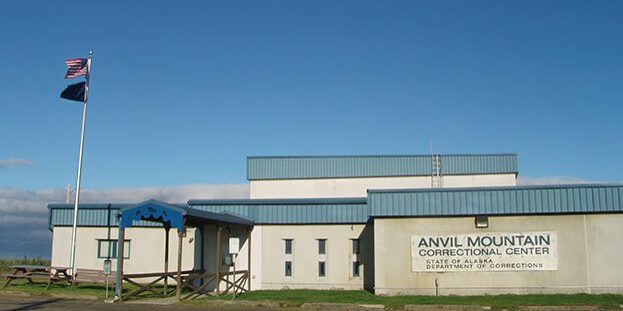Anvil Mountain Correctional Center continues to exceed its population capacity. KNOM reported last year that between 2018 and 2019 AMCC exceeded its maximum capacity for inmate population 70% of the time.
“The Alaska Justice Information Center, or AJIC, our mission is to compile, analyze, and report on criminal justice topics to policymakers and practitioners in order to improve public safety, increase the criminal justice system accountability, and to reduce recidivism.”
– Troy Payne
That’s Troy Payne, the director of AJIC and associate professor at University of Alaska Anchorage’s Justice Center. As a unit within the justice center at UAA, they are staffed by professional researchers and criminal justice professors. Outside of analyzing data, they work to bring criminal justice transparency to communities.
“A lot of our work recently has been to bring agency data that they’re already collecting, to light in a way that the general public can more readily access.”
AJIC’s online dashboard is accessible to anyone with internet access. The dashboard reveals the Department of Corrections (DOC) population data for all facilities in Alaska. In Western Alaska, AMCC’s inmate population between 2/28/2020 and 2/28/2021 was over capacity 66.7% of the time. This was confirmed by AMCC’s superintendent Sandra Martinson while speaking with KNOM’s reporter, Colin O’Connor.
Colin: “Has there been instances throughout this past year of overcrowding at AMCC?”
Martinson: “So, yes we have had an increase in our inmate population. However, we are working with our judicial system, we’re working with other facilities to help balance that in any way that we can.”
Other Alaskan DOC facilities have also experienced similar overcrowding this year, like Anchorage Correctional that saw their facility exceeding capacity 62% of the time or at Fairbanks Correctional which was overcrowded 80% of the year. Although, this is not a new challenge for Anvil; AMCC had experienced a very similar year in 2018-2019 when the facility was estimated to be over-capacity 70% of that year.
However, in an effort to gain perspective on how AMCC is handling being over-capacity, AMCC’s superintendent Martinson was questioned about this familiar circumstance.
Colin: “When overcrowding affects your facility, what resolutions could you then work to combat overcrowding? Do you have resolutions to that problem of overcrowding?”
Martinson: “Right, so the department of corrections definitely has protocols in place for that. We will obviously be going with the direction of our department if and when we experience the overcrowding.”
Colin: “Can you be specific to what those protocols are?”
Martinson: “No sir.”
Fortunately for groups like AJIC, data is available, and they offer best practice solutions.
Payne: “There is a question of the extent that which the unsentenced population needs to be housed inside a DOC facility.”
Colin: “Possibly looking to alternative ways of housing, can you be specific to what you’re referring to?”
Payne: “Yeah, there are alternatives to pre-trial detention. You can release people on their own recognizance, you can release people to pre-trial supervision, people can be released to electronic monitoring. There is a variety of ways that we can ensure public safety while people are awaiting the adjudication of their cases.”
And with guidelines for trials to resume in the coming months, those who have experienced the backlog within the criminal justice system will hopefully begin to get closure.
Image at top: Exterior of the AMCC facility. Photo by Department of Corrections.




